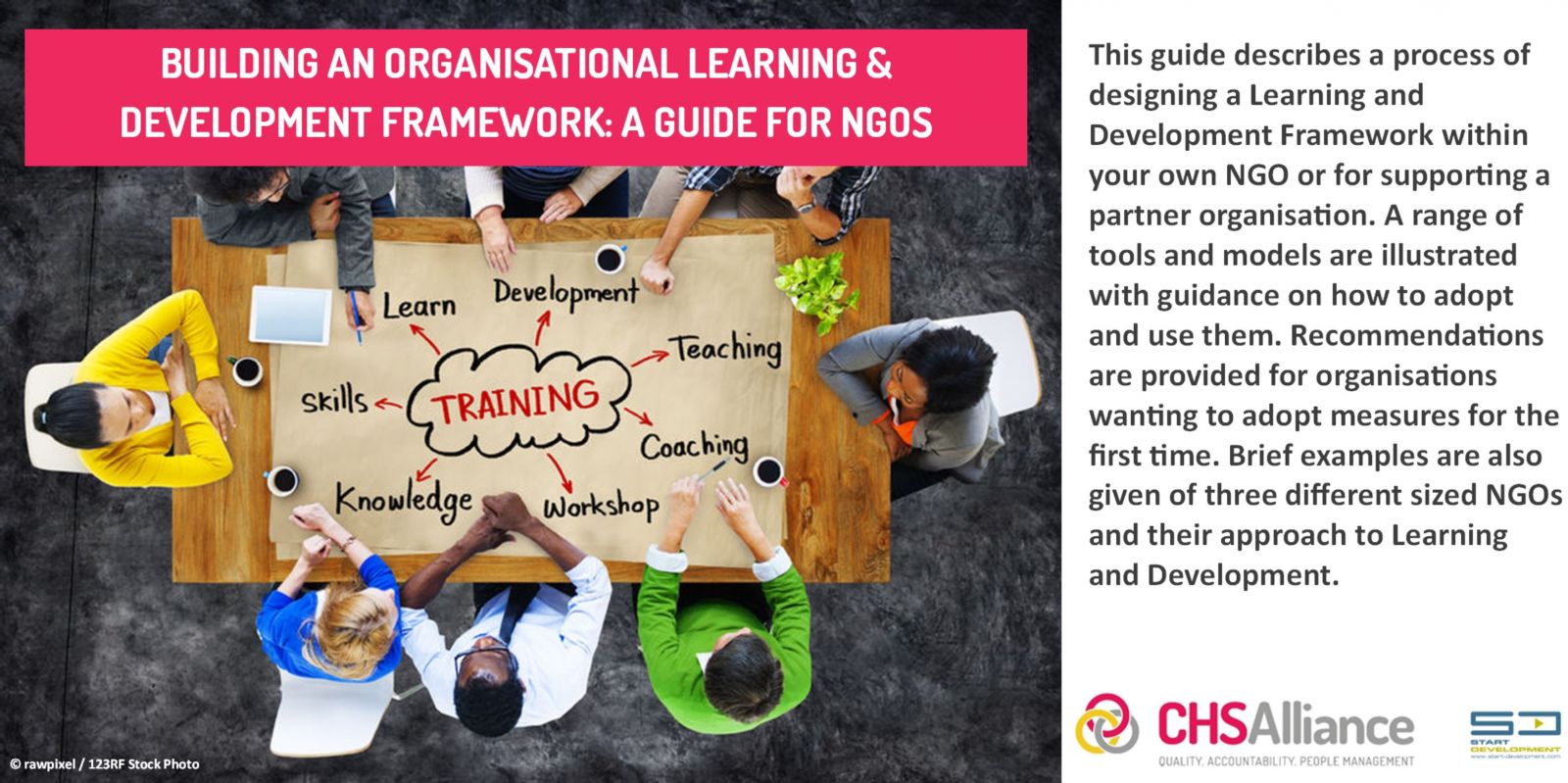Building an Organisational Learning and Development Framework: ‘We can Do It’.
Ann from Start Development gives an overview of our guide to designing a Learning and Development Framework, which was drafted in order to support NGOs in strengthening their people management practices and processes.
While large international NGOs may have an organisational structure which ensures that the Human Resources (HR), Organisational Development (OD) and Learning and Development (L and D) functions are represented at senior management level and are equal business partners within the organisation, smaller or younger organisations may not feel it is within their current scope. However, CHS Alliance believes that with the appropriate support it is within the range of many organisations.
Supporting the strengthening of People Management practice and processes within organisations is a strategic priority of the CHS Alliance. As part of their work to ensure that resources are accessible to those organisations who may not have in-house expertise, a guide for NGOs on how to build an organisational Learning and Development Framework, funded by the DFID PPA programme, has recently been published.

Why might it be beneficial to your organisation to consider adopting an L and D framework? After all, you may be thinking that you do not currently have the capacity for a new function, nor a budget to deliver a new programme. The aim of the framework is for you to move from this position to one where the management team is confident to say ‘Yes, we can do it’.
An effective organisational L and D programme can support you to ensure that ‘communities and people affected by crisis receive the assistance they require from competent and well managed staff and volunteers’ (CHS Commitment 8). CIPD states that articulating a Learning and Development strategy allows an organisation to “develop a workforce’s capabilities, skills and competencies to create a sustainable, successful organisation, and is an important part of an organisation’s overall business strategy”. Furthermore, you can expect to see increased desired staff retention, improved staff engagement and positive feedback on job satisfaction, potential reduced recruitment costs as staff are developed to take new roles, and increased excellence in service delivery.
The Framework document contains a mini toolkit designed for organisations which identify with the following situations:
- Small to medium sized NGOs with limited HR capacity and little or no structure currently in place for implementing an employee Learning and Development programme
- NGOs in the early stages of their lifecycle, or where a new NGO is being formed
- Large NGOs seeking to offer support to partner organisations in the development of an L&D framework, where their own L&D frameworks might be too complex to be adopted.
Following five basic steps of a Theory of Change model should enable you to carry out:
- An assessment of the humanitarian competencies desired in your organisation to meet strategic objectives in line with internationally recognised standards
- An assessment of the learning needs of the workforce
- The design of a blended learning programme to meet those needs
- The design of an assessment tool to provide evidence of change and to map progress against the International Development and Humanitarian Training Competency Framework.
To encourage you to get started, it is helpful to focus on what success might look like. I close with a quote from one of the organisations featured in the document, Retrak, which took a step of faith in adopting an L and D framework at a time when resources, both financial and workforce, were very limited:
“By investing in competent (and dedicated) staff, designing and implementing high quality programmes, Retrak has now taken the position of one of the leading global organisations in their field”. Marcus Holmgren, Läkarmissionen. (Retrak annual review 2014).

